Ask the Experts: The New Brazil and The Changing Hemisphere
Arturo Sarukhan Answers: Two trends have and will continue to impact our hemisphere, particularly in Mexico–U.S. relations. First, classic paradigms of international relations offer little to comprehend the current dynamics of Mexico–U.S. relations. Our unique relationship no longer distinguishes between domestic politics and international policy issues, nor is it demarcated along those lines. Instead, it … Read more
The Paradoxes of Indigenous Politics
Indigenous peoples in the Americas, long on the sidelines of government and policymaking, continue to achieve significant political clout and representation. Their growing political presence and the policy changes that have resulted constitute a profound and rapid transformation. But questions remain as to what these changes mean for the lives of Indigenous peoples. As late … Read more
Venezuela’s Oil Tale
Support AQ! “Like” our Fall 2013 issue cover here: http://on.fb.me/1kNso1z The uncertainties surrounding Venezuela and President Hugo Chávez make it very difficult to discern the truth about what is going on in the country. For example, how does one explain the underperformance of Venezuela’s bonds in the past four years, in the middle of an … Read more
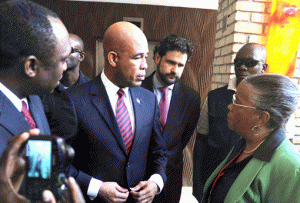
Haiti’s New President: Welcome to the Toughest Job in the Americas
After an election process that lasted almost a year and a half—and was marred by fraud and controversy—Haiti’s new president, Michel Martelly, takes office in May. In the words of former U.S. President Bill Clinton, now United Nations Special Envoy for Haiti, President Martelly will face the daunting task of “building back better.” The challenge … Read more

The Other BRIC in Latin America: India
When trade relations between Argentina and China hit choppy waters early last year, a new partner suddenly appeared on the horizon. In April 2010, Beijing stopped buying Argentine soybean oil in retaliation for Argentina’s restrictions on Chinese imports. That could have dealt a serious blow: Argentina is the world’s largest exporter of soybean oil, and … Read more

Reflections on Brazil’s Global Rise
This is the first article I have written since leaving the foreign ministry of Brazil. As someone who was very active in formulating foreign policy during what might be called “the Lula era” (and still without the benefit of much hindsight), it is an opportunity to begin taking stock of what has been achieved so … Read more

Immigrants and America’s Future
The formal name of the Statue of Liberty, which has greeted visitors sailing into New York harbor since 1886, is “Liberty Enlightening the World.” A bronze tablet inside the statue’s pedestal displays a poem by Emma Lazarus that reads, in part, “Give me your tired, your poor/Your huddled masses yearning to breathe free/The wretched refuse … Read more
Charticle: Who Supports Free Trade (and Why)?
Check back to AQ Online for an interactive charticle with this information. At the core of the “Washington Consensus,” the package of free-market policies popular among Western economists in the 1990s, was strong support for free trade. However, the extent to which this “consensus” extended beyond leaders of advanced industrial democracies and international lending agencies … Read more

As the World Trades
Thirty years ago, Canada lowered its import tariffs on European shoes. Now, Canadian shoemakers are pushing for full tariff elimination. Why? They want cheaper access to European manufacturing machinery. After three decades of sizing up the competition, Canadian manufacturers have established a comparative advantage on shoe models that can compete in European markets—and they need … Read more
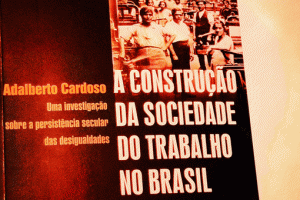
[i]A construção da sociedade do trabalho no Brasil: uma investigação sobre a persistência secular das desigualdades[/i] by Adalberto Moreira Cardoso
According to the Brazilian Institute for Geography and Statistics, half of Brazil’s estimated 60 million poor have entered the lower middle class in recent years. But the country still faces the daunting task of sustaining this trend and overcoming deeply rooted social and economic injustice. This challenge is brought into sharp focus in Adalberto Moreira … Read more
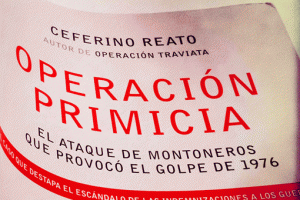
[i]Operación Primicia: El ataque de Montoneros que provocó el golpe de 1976[/i] by Ceferino Reato
Over four decades ago, South America experienced a dark period of home-grown terrorism led by socialist revolutionary groups, whose armed rebellion in turn sparked military dictatorships and state terrorism on a massive scale. By the 1970s, one Argentine group, the Montoneros, stood out from the rest. They had amassed significant clout, with a membership that … Read more
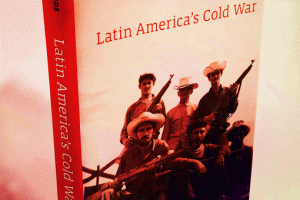
[i]Latin America’s Cold War[/i] by Hal Brands
The Cold War was marked by relative stability in the relationship between the superpowers and their European allies and dependencies, but scarred by bloody tumult in most of the rest of the world. Other than Vietnam, the blood ran thickest in Latin America. In Latin America’s Cold War, Hal Brands, a security historian and assistant … Read more
From the Think Tanks
The Western Hemisphere has the world’s most extensive network of free-trade agreements with developing and developed trade partners, concludes the report A New Trade Policy for the United States: Lessons from Latin America, published by the Latin American Program at the Woodrow Wilson International Center for Scholars. Because of its diverse free-trade relationships, Latin America … Read more

Instituto Culinario de México
Mexico is squarely on the global map of haute cuisine thanks to the pioneering work of the Instituto Culinario de México (ICUM) in Puebla. Launched in 1994 in the home of founder Giovanna Medina, ICUM now boasts over 1,500 graduates, including some of the region’s most talented and prize-winning chefs. Students come from all over … Read more
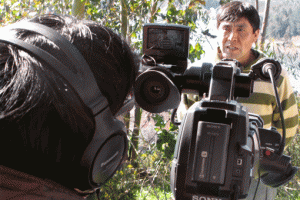
A View to Our Land
The phrase “Taiñ Azkintun” in the Mapudungun language of the Mapuche people of Chile translates into English as “our view.” It is also the name of an innovative arts training program, launched in 2010, to teach young indigenous Chileans—who constitute 4 percent of the national population—how to capture their ideas and experiences on video. The … Read more


